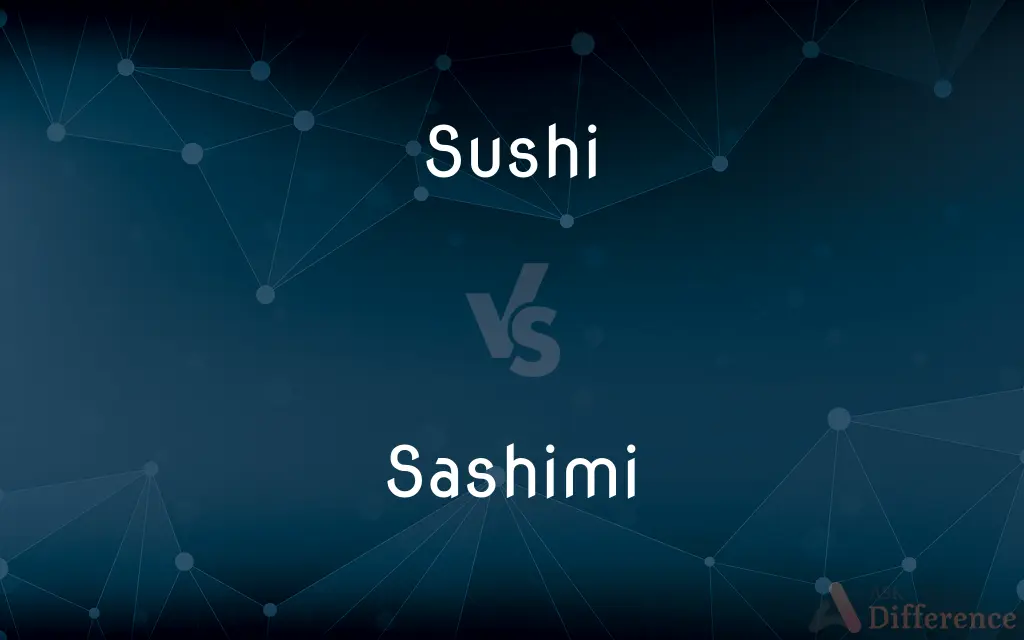Sushi vs. Sashimi — What's the Difference?

Difference Between Sushi and Sashimi
ADVERTISEMENT
Compare with Definitions
Sushi
Sushi (すし, 寿司, 鮨, pronounced [sɯɕiꜜ] or [sɯꜜɕi]) is a traditional Japanese dish of prepared vinegared rice (鮨飯, sushi-meshi), usually with some sugar and salt, accompanying a variety of ingredients (ネタ, neta), such as seafood, often raw, and vegetables. Styles of sushi and its presentation vary widely, but the one key ingredient is "sushi rice", also referred to as shari (しゃり), or sumeshi (酢飯).Sushi is traditionally made with medium-grain white rice, though it can be prepared with brown rice or short-grain rice.
Sashimi
Sashimi (刺身, English: sə-SHEE-mee, Japanese: [saɕimiꜜ]) is a Japanese delicacy consisting of fresh raw fish or meat sliced into thin pieces and often eaten with soy sauce on rice .
Sushi
Cold cooked rice dressed with vinegar that is shaped into pieces and topped with raw or cooked fish, or formed into a roll with fish, egg, or vegetables and often wrapped in seaweed.
Sashimi
A Japanese dish consisting of very thin bite-size slices of fresh raw fish, traditionally served with soy sauce and wasabi.
Sushi
A Japanese dish made of small portions of sticky white rice flavored with vinegar, usually wrapped in seaweed and filled or topped with fish, vegetables or meat.
For the vegetarians, she served cucumber sushi.
ADVERTISEMENT
Sashimi
A dish consisting of thin slices or pieces of raw fish or meat.
Sushi
(proscribed) Raw fish, especially as a Japanese dish.
Sashimi
Very thinly sliced raw fish
Sushi
Rice (with raw fish) wrapped in seaweed
Share Your Discovery

Previous Comparison
Hrs vs. Hour
Next Comparison
Churlish vs. Insubordinate













































